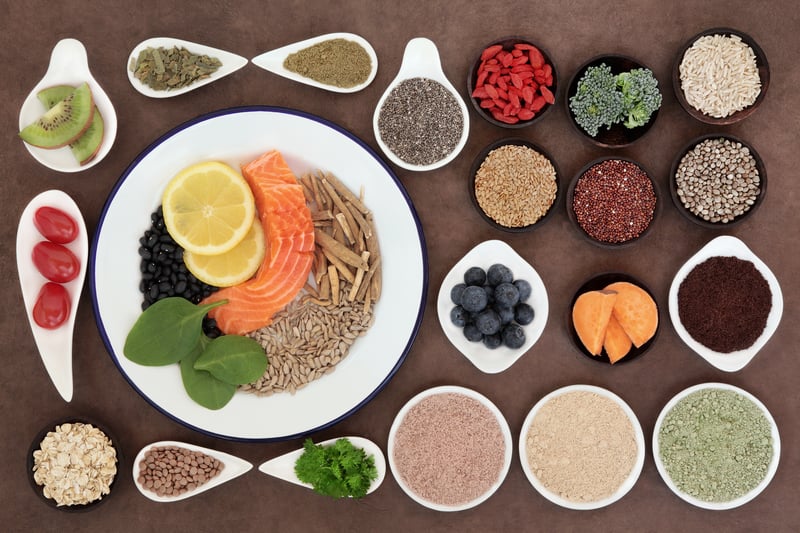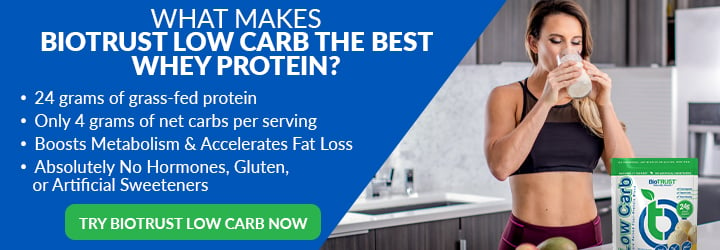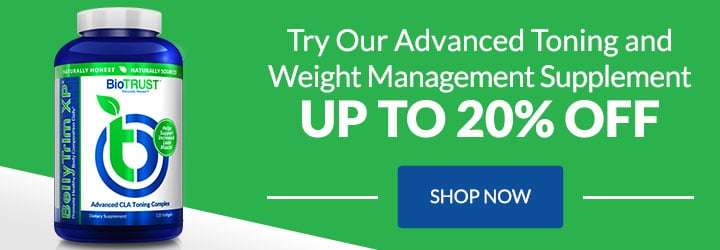Ask the Coaches: What Are The Top Foods to Boost Metabolism?

Hi Coaches,
I’m sure you get this question a lot, but as I’m getting older, I feel like my metabolism is getting slower and slower. It sure is harder to keep the weight off than when I was in my 20’s and even 30’s. I’ve read that proper nutrition starts in the grocery store, so I’m looking for foods that can help me get on the right track. What are the top foods to boost metabolism and is there a grocery list I can use to help me manage my weight?
-Jodie
So, you’re looking to boost a sluggish metabolism, are you, Jodie? Your instinct is absolutely right: and you’re not alone. Having said that, you’re wise to consider the role food plays to support a healthy metabolic rate, which it most certainly does. And we appreciate your search for the top foods to boost metabolism.
But before we dig into that, let’s talk briefly about metabolism. Most of the time, when we refer to metabolism, what we’re really talking about is total daily energy (or caloric) expenditure (TDEE), which is made up of four components:
- Resting Metabolic Rate (RMR). This is essentially the number of calories, or amount of energy, your body requires to sustain vital functions at rest. This makes up the largest component of your overall metabolic rate, ranging from 60% to 75% of your TDEE.
- Thermic Effect of Feeding (TEF). Digestion, absorption, and assimilation of food are active processes that require energy. TEF accounts for approximately 5 – 15% of overall metabolic rate.
- Exercise Activity Thermogenesis (EAT). This refers to the number of calories burned during structured exercise. This is the single most variable element of metabolism. Depending on activity level, it can account for 15% to 30% of overall energy expenditure.
- Non-Exercise Activity Thermogenesis (NEAT). This component of metabolic rate consists of non-structured activity, which includes doing household chores, walking to and from your car, shivering, fidgeting, maintaining posture, etc.
Together, EAT and NEAT represent the most variable elements of TDEE. For instance, physical activity (both structured and non-structured) tends to decrease with age, and this is directly related to the age-related decline we see in metabolic rate. More and more, increasing NEAT is being recognized as a key strategy for promoting weight management and overall health.
And when it comes to EAT, certain types of exercise may also have a significant impact on RMR. For instance, resistance training and high-intensity interval training (HIIT) may boost metabolic rate at rest—even hours after exercise is over. Of course, weight lifting is the most effective strategy for building and maintaining lean muscle, which can have a modest effect on RMR. (Admittedly, said metabolism-boosting effect is drastically overstated by most.)
Now, when we’re talking about boosting metabolic rate, it’s probably also fair to speculate that the desired goal is fat loss, which would involve:
- Increasing TDEE
- Reducing caloric intake (preferably without decreasing food intake)
Along those lines, when it comes to selecting foods to boost metabolism, there are several attractive features to seek out:
- Foods or nutrients with a high TEF
- Foods or nutrients that increase RMR
- Foods or nutrients that go undigested
- Foods or nutrients that reduce calorie absorption from other foods
- Foods with low-energy-density
With all that in mind, we can start to build some guiding principles, which can also help us flesh out our metabolism-boosting grocery list. So what do you say, Jodie? Are you ready?

Our Favorite Tips + Foods to Boost Metabolism
1. Choose real, whole, minimally processed foods. You’ve probably heard you should ditch ultraprocessed foods in favor of whole, minimally processed foods more times than you care to count. But there are many good reasons, especially if you value your health. When it comes to foods to boost metabolism, whole-food meals boost TEF to a greater extent than processed food meals, even when the meals contain the same number of calories. On top of that, whole-food meals tend to be more satiating and have a more favorable impact on appetite-regulating hormones. For those reasons, your grocery list should be made up predominantly, if not exclusively, of REAL, whole foods. For example, this means true whole grains instead of “foods” made with refined flours.
2. Choose high-protein foods. Among the three macronutrients—protein, carbohydrate, and fat—protein has the greatest TEF, by far. In fact, protein’s TEF is about 3 times greater than carbohydrate and 6 times that of fat. What’s more, high-protein diets (and meals, in general) tend to be more satisfying, helping control appetite, hunger, and cravings, and in the grand scheme of things, high-protein diets are markedly effective at reducing body fat and increasing lean muscle. With that in mind, your grocery list should include plenty of lean proteins. (Animal- and plant-based examples are provided below.)
3. Choose low-energy-dense foods. Energy density refers to the relationship of the caloric content of a food relative to its weight (i.e., calories per gram of food). When you choose low-energy-dense foods (LEDF), which typically have high water and fiber content, you can eat more food. That’s key because one of the most important factors in making you feel full (satiated) and cueing you to stop eating is food volume. Along those lines, diets rich in LEDF typically result in greater satiety and lower caloric intake. The best examples of LEDF are fruits and veggies, and whole grains, legumes, lean meats, and dairy are also LEDF. In other words, this is a fancy way of saying your grocery list should be predominated by copious colorful fruits and vegetables.
4. Don’t fear the fat. Since dietary fat is the most energy-dense macronutrient with the lowest TEF, you might conclude that you should strike fatty foods and oils from your list. Au contraire, Jodie. Despite being brainwashed to believe that “fat is bad” and “fat makes you fat” for years, we now know these are disproven myths. And when it comes to foods to boost metabolism, we know that certain fats like omega-3s (found in seafood, and to a lesser degree, certain nuts and seeds) and MCTs (found in coconut oil, butter, and ghee) can increase metabolic rate. And since we’re talking about fat, you’ll also want to include extra virgin olive oil, olives, avocados, nuts, and seeds, which are staples of a Mediterranean-style diet and are consistently shown to be associated with less body fat. Don’t fear the fat, my friend; your grocery list should certainly include foods rich in healthy fats.
5. Choose “resistant” foods. These days, the nutritional fear pendulum has actually swung in favor of carbs. In other words, low carb is all the craze. But guess what? When you see carbs, you don’t need to run the other way. Certain common carb foods contain resistant starch (RS), which is a unique carb that “escapes” digestion. RS increases satiety, reduces food intake, increases fat burning, reduces fat storage, improves insulin sensitivity, and you guessed it, boosts metabolic rate (TEF). RS is found in unripe bananas, raw oats, raw potatoes, lentils, white beans, and in whole grains, potatoes, and legumes when they’ve been cooked and then cooled. Nuts are also resistant to digestion; in fact, nearly 20% of the calories from nuts aren’t absorbed. What’s more, chewing nuts signals satiety, and nut consumption triggers an increase in metabolic rate. So, make sure your grocery list contains “resistant” foods like bananas, potatoes, whole grains, legumes, nuts, and seeds.
6. Stock your pantry. Believe it or not, common pantry items like herbs, spices, and vinegars can also have a beneficial impact on your metabolism-boosting efforts. For instance, cayenne pepper has been shown to increase metabolic rate and fat burning. Meanwhile, cinnamon, turmeric, cocoa, and apple cider vinegar can all improve glycemic control and insulin sensitivity, and each of these, along with cumin, has been shown to support weight loss. If your pantry isn’t stocked already, add these herbs, spices, and vinegars to your grocery list.
7. Drink up! One thing you won’t find on my metabolism-boosting grocery list is sugar-sweetened beverages, such as soda and fruit juice. What you will find, however, is spring water, coffee, and various teas. There’s little debate that proper hydration plays an important role in metabolism, and coffee and certain teas that I’ve listed have been shown to boost metabolic rate, increase fat burning, and reduce hunger. Along those lines, make sure you add your metabolism-boosting beverage(s) of choice to your grocery list.
I know, that’s a lot to remember. That’s why I created a handy list (with checkboxes to boot) of the top foods to boost metabolism in this grocery list. Click the link below, print off this list and take with you to the store.
==> Metabolism Boosting Grocery List (printable)
Oh, and one more thing, Jodie. Make sure you park as far away as possible when you get to the store. That’s just another NEAT trick you can use to boost your metabolism!







